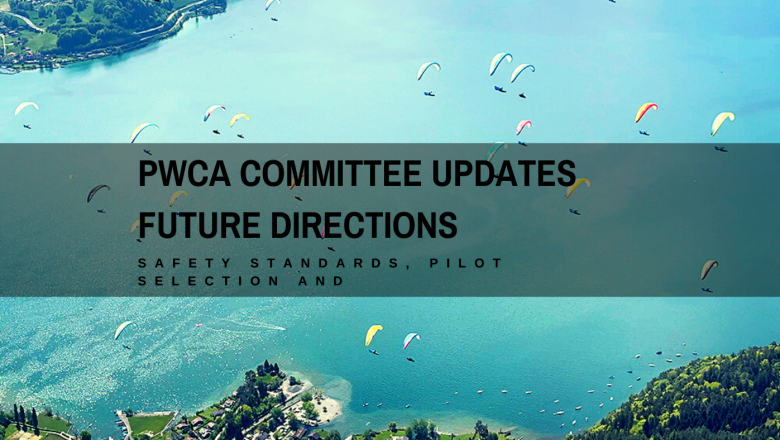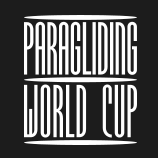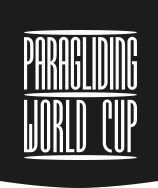PWCA Committee Update: Safety Standards, Pilot Selection and Future Directions
- Oct 24 2025

Members of the Paragliding World Cup Association,
As a reflection of the current happenings in the paragliding competition scene, the PWCA Committee has held, and it will hold, a series of meetings to evaluate the impact on the Association and determine the direction or measures we need to take. The PWCA Committee, comprising 14 members elected by the pilots in the General Assembly, collectively steers the Association. The Committee includes an array of paragliding professionals, current and former competitors, organizers, and administrators.
Safety Across Events
Given the global concern about safety in current high-level competitions, the Committee’s main focus is on assessing the current safety standards, requirements, and practices within the competitions that PWCA is organizing. Considering that PWCA runs a worldwide series, which features over 20 events annually, we acknowledge that the safety services provided by organizers vary globally. Consequently, we agree that not all locations can meet the standards comparable to those in some other countries. By the strategy practiced over the last few decades, that was acceptable, and in the season planning, every year, PWCA had locations where the safety services available were lower than ideal. As the world changes, we believe that such a situation will persist, and some destinations will never match the standards that some pilots are used to seeing, and which we would like to have.
Transparency and Minimum Safety Requirements
As part of the PWCA’s mission is to develop a network of destinations and organizers, and following the feedback collected over the years, our approach to this situation is to achieve a complete transparency of the safety setup, medical provisions, equipment available, the quality of hospitals, and helicopter rescue availability, to be shared with the pilots before their final selection and payment for the event in question. That may include detailed information on previous safety experiences at the site, names of officials, observers’ reports, and any other relevant data that can help a pilot make an informed decision about joining or not participating in a particular event. In parallel, we will also work to create an improved minimum required standard. If such a level of service can not be met, we will not put that bid on the calendar in the first place. Also, if we find that an already planned competition is, for whatever reason, no longer able to meet that minimum standard and the situation can not be resolved, we will cancel that competition rather than risk pilot safety. This improved standard will include the description of medical services, but also the qualifications and experience of key meet officials.
Specific Safety Concerns: World Cup in India
We are currently facing a situation like this with the World Cup scheduled in India, where safety concerns are regularly raised. The safety topics are examined in detail, and organizers are requested to provide all the details on the complete event and competition setup, safety and medical provisions, waypoints, and goals. That info will be available in the next few weeks once confirmed by the local organizers.
Commitment to Advanced Tracking and Safety Systems
As for PWCA, we were the first operator of the Flarm-enabled live trackers, with two-way communication and level reporting, highlighting our commitment to ultimate and available safety systems. We were also the first to fully integrate GSM-based tracking with satellite tracking systems, making everything visible in the dedicated safety and retrieval platform. It has already proven itself in the World Cups in Feltre, Macedonia, and Turkey. Following the successful trials and finally a full implementation, the Committee has the intention of making satellite tracking mandatory starting with the Superfinal 2025 to be held in Spain in May 2026. We are also considering requiring, as an additional safety requirement, that pilots have satellite trackers at the competitions prior to the Superfinal, based on the quality of the local GSM network, as we did for the 2024 season’s last event in the USA.
In addition, the Committee is willing to expand our capabilities across other platforms or providers, recognizing that there is room for improvement and that an expanded safety overview would be beneficial. In the future, we will integrate other platforms with the one already in use.
Pilot quality
The Committee also believes that the current format of the World Cup, with 125 pilots per event, is facing its end. The understanding that one of the biggest safety factors is the individual pilot’s quality is widely acknowledged within the PWCA. Cutting the selection at the XX level, as we do now, is too unrestrictive, and the option to have that cut at a higher level (letters) may become necessary. Introducing this kind of double criterion, limiting the maximum number of pilots to 100, coupled with the cut at certain letters much higher than XX, will significantly increase the average pilot quality and reduce the overall safety threat. There are drawbacks to these policies, and overcoming them will be another serious challenge to be addressed.
Ballast Regulations and Planned Adjustments
Another aspect of safety, well known in our community, is the ballast issue. It is often forgotten that the relaxed ballast rule was introduced in 2019 at the request of lightweight pilots to enhance competitiveness. This concept is currently broken; the number of incidents in relation to the ballast is overwhelming, and action must be taken as soon as possible. The Committee is fully committed to improving this dangerous situation. The measures we are considering include implementing equalizers at one World Cup event, creating a lightweight class, or reinstating a limit on the amount of ballast that can be used. Some of those measures are highly unpopular, so finding a balance between safety and pilots’ acceptance proves to be a real challenge, and any pilot’s input is highly appreciated. If we decide to proceed with any of these measures, the decision will be communicated broadly. Pilots who join will be informed, in addition to the safety standards, about such a measure before the final registration and payment for the event in question.
Task Committees and Event Safety
A lot of effort goes into improving the procedures for forming the Task Committees, the quality of the Task Committee members, and the safety of the tasks they design. We are facing rapid deterioration in the quality of these processes and in the motivation of pilots to join the Task Committees. Almost all events in the last few years had issues sourcing qualified, motivated members for the Task committees. Many ideas are already shared and well known in the wider community, although the solution is not yet clear. The Committee believes that this is one of the key elements of safety at the high-level events, and we are intensively looking into solutions. We are considering announcing the Task Committee members, Meet Director, and all key officials to the pilots before final registration and payment for the event. That will allow the pilots to give feedback or decide whether to join if they believe the Task Committee lacks sufficient qualifications.
In order to standardize the task setting process, we have decided to join the CIVL effort to develop, a step-by-step guide. This will ensure that safety-related issues are no longer overlooked and that the focus remains on prioritizing safety aspects over other task-setting parameters.
For the locations where applicable, we are also considering publishing predefined tasks that cover most typical weather situations for each venue, with different lengths for each task type, and a clear explanation of the criteria used in the task design. This will allow pilots to have additional valuable information, and Task Committee members to have a much easier job of selecting the appropriate task and only do the fine-tuning. This will leave everyone with more time to focus on preparing their equipment and concentrate on the task to be flown.
Structural Upgrade
On another topic, there is a feeling among the Committee members that the World Cup structure needs to be upgraded to better address the challenges the Association is facing. Over the years, the combination of skills and roles, driven by financial constraints and practical considerations, led to a setup where multiple roles were assigned to a single person. It has been dragging through the Association since its establishment. It was very convenient for all parties, but this concept has reached its limit and needs to be addressed. This represents a serious challenge, as it affects the feasibility of the entire operation, since the separation of roles will unavoidably lead to an increased number of people being contracted. On the other hand, the Committee believes that an increased standard like this will bring more transparency to the Association, and that is obviously a worthwhile argument. This topic, along with other related topics, will be prepared by the Committee and addressed in the next General Assembly for the 2026/2027 season, coinciding with the World Cup in Italy, in Gemona, during the last week of July 2026. An appropriate agenda will be shared in time as per the actual regulations.
Invitation for Member Feedback
Apart from providing an update and insight into the Committee’s work, this message aims to collect members’ feedback on the mentioned topics or any other topic of interest that requires the Committee’s attention. To make this process easier, we have created a dedicated email contact form ( on the website’s contact page) that connects directly with all Committee members, ensuring effective communication.
Your feedback is highly appreciated and plays an important role in shaping our future actions. Please feel free to share your thoughts with the Committee here:
Get in Touch with the Committee > https://pwca.events/contact-us/

